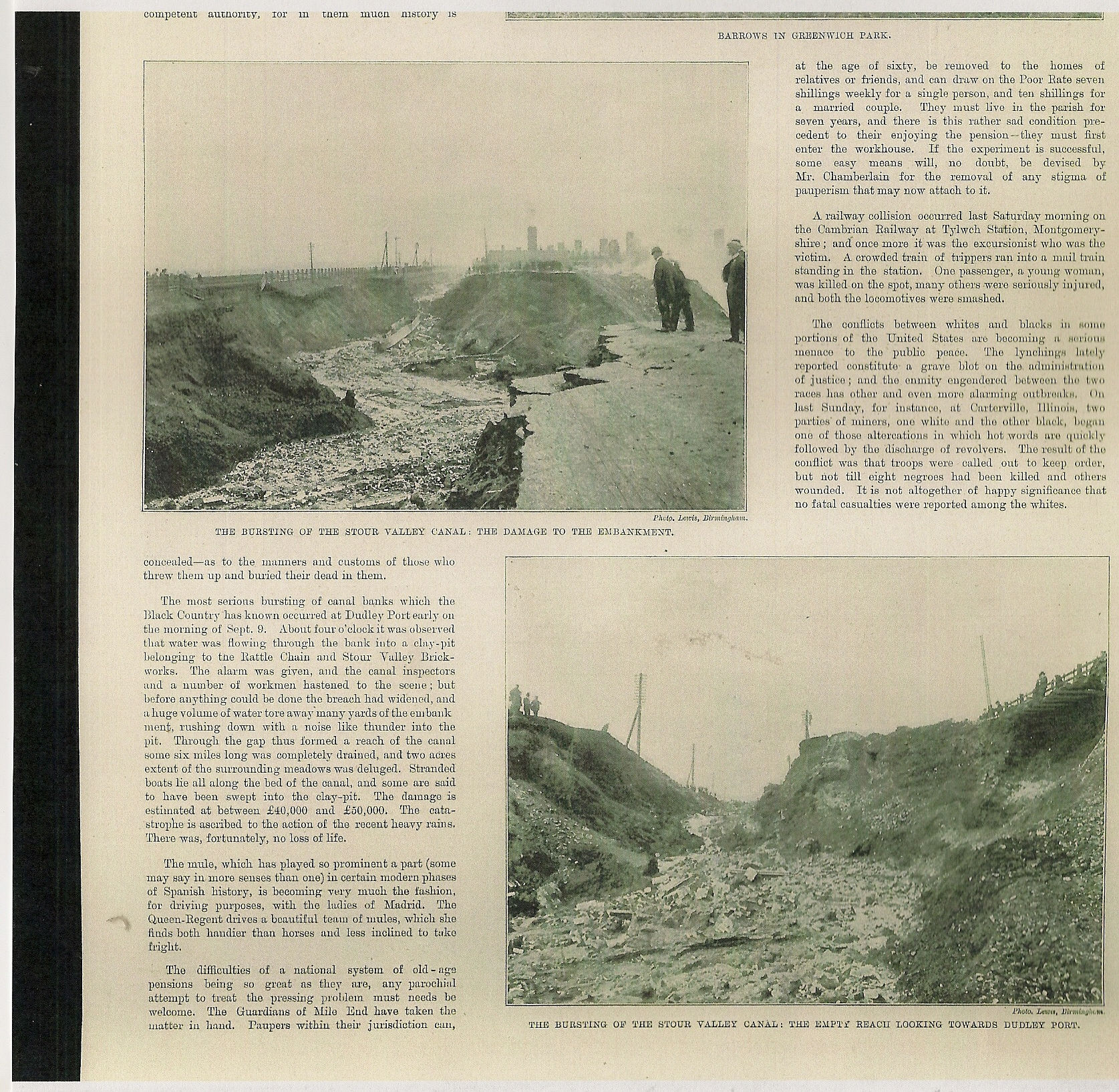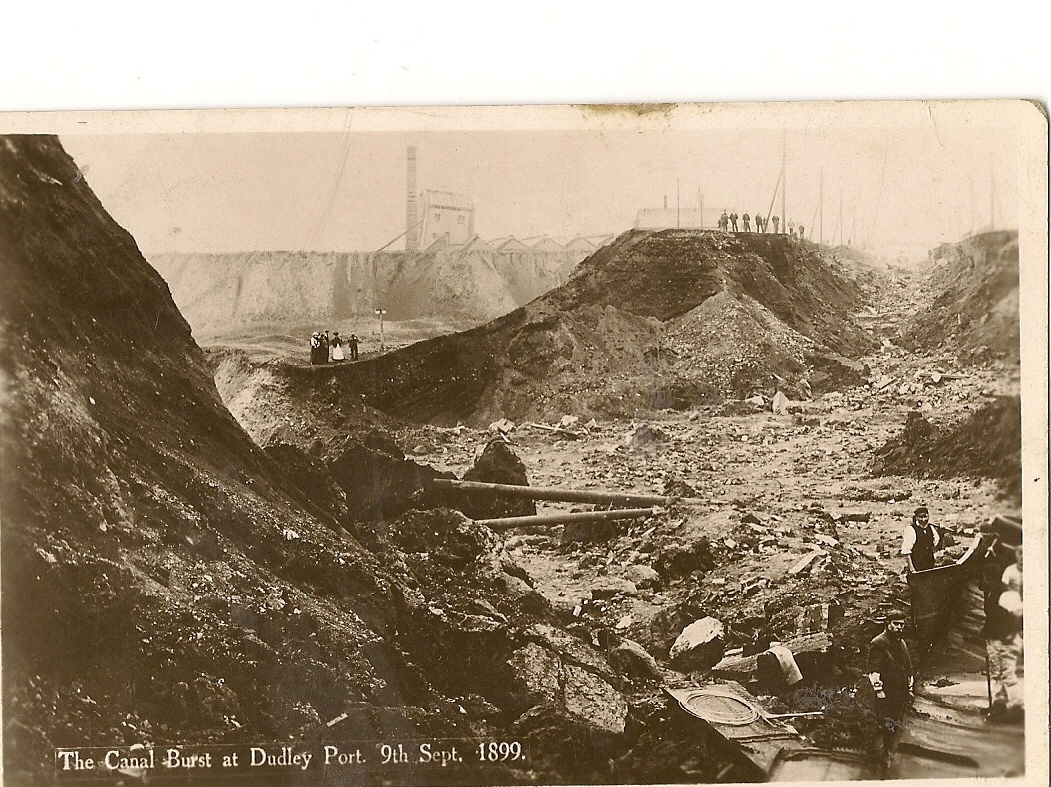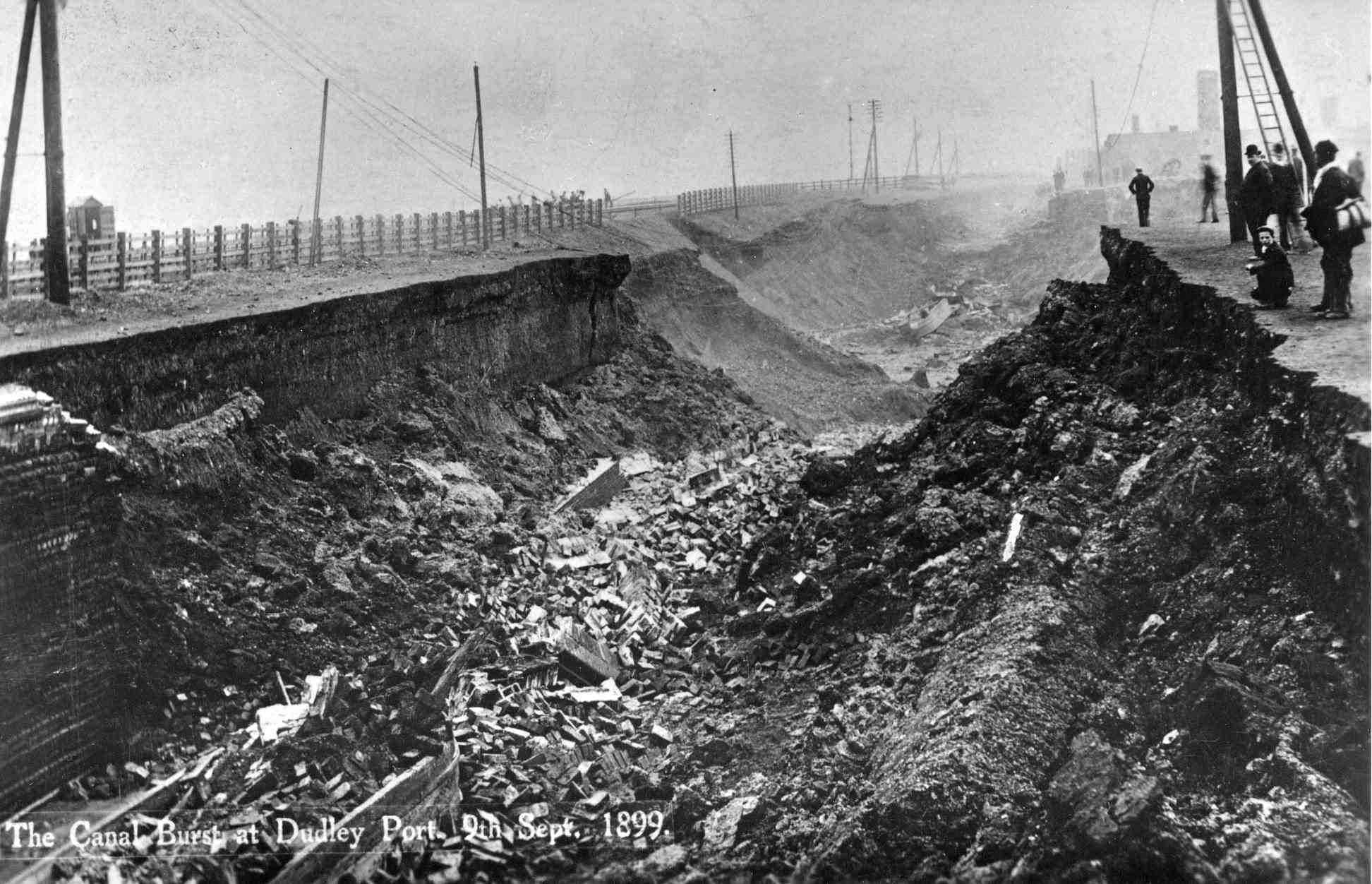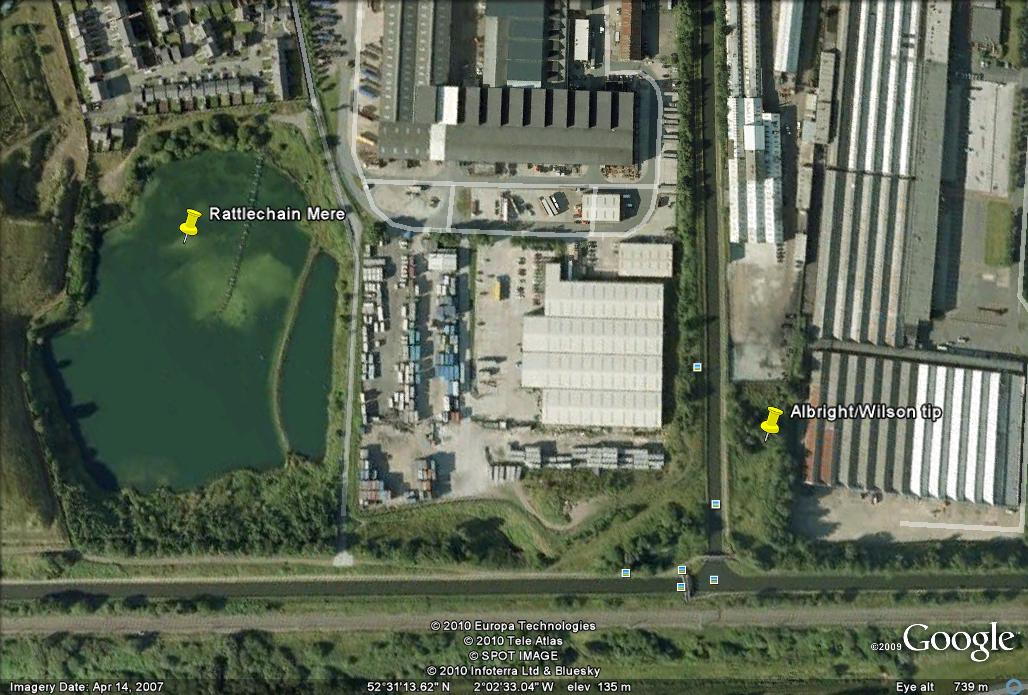A HOLE IN THE GROUND
The origins of the site and its original owner of the abandoned clay pit land that formed the Albright and Wilson site is detailed in The British Clay worker Volume 16 1908 page 7. It is evident that he was an entrepreneur who had forged political connections which no doubt aided his empire, being a local councillor on both Tipton and Rowley Regis Councils.
“Mr Barnett has succeeded in building up a very flourishing business particularly in blue bricks in the teeth of circumstances that would have proved too strong for many a strong man. Entering the brickyard at the age of twelve, he lost his left arm before he was sixteen by an accident in the millhouse. This was a terrible misfortune, yet Mr Barnett did not allow it to deter him from his chosen career, and continued to work as an engineer for the succeeding ten years.
It was 1882 that he took the lease of the Rattlechain Brickworks, which had upto that time been anything but a profitable concern. Mr Barnett however saw possibilities that he set himself with tireless energy to develop and in less than twelve months he increased the output of hand-moulded bricks from 30,000 to 180,000 per week. Some idea of the improvements he instituted at Rattlechain may be gathered from the fact that he pulled down fourteen arch kilns which he found there, and in their stead erected a continuous red, and recently a continuous patent blue brick kiln.
Mr Barnett’s next extension was the purchase of the freehold of the Groveland and Tividale estates, with an area of some 100 acres. About 1894 he commenced building the Stour Valley Brickworks on the former of these estates, laying out the whole works on the most approved lines. “
Quite ominously the article also predicts the eventual fate of the brickwork enterprise.
“His property at Dudley Port is particularly valuable, for when the clay is gone the land will be equally valuable for tips. Moreover the surrounding canal is a highly important factor..”
THE 1899 CANAL BREACH
Some events in history appear fated to specific dates having irony when viewed from the present. The “999” event (with an extra 9) saw a spectacular emergency resulting from the Birmingham canal breaching into the Rattlechain brickworks site.
The illustrated London News of 23rd September reported
“The most serious bursting of canal banks which the black country has known occurred at Dudley Port on Sept 9th. About 4 O’Clock it was observed that after was flowing through the bank of the Rattle Chain and Stour Valley brick works.The alarm was given and the canal inspectors and a number of workmen hastened to the scene; but before anything could be done the breach had widened and a huge volume of water tore away many yards of the embankment, rushing down with a noise like thunder into the pit. Through the gap thus formed a reach of the canal some six miles long was completely drained and two acres extent of surrounding meadows were deluged. Stranded boats lie all along the bed of the canal and some are said to have been swept into the clay-pit. The damage is estimated between £10,000 and £50,000. The catastrophe is ascribed to the recent heavy rains. There was, fortunately, no loss of life.”
Another account is given in The Engineer magazine of 15th September.
“Damage estimated at £50,000 was done on Saturday last by the bursting of a canal at Dudley Port. The accident happened on the main waterway, known as the Stour Valley low level, belonging to the Birmingham Canal Company, at a point midway between Dudley Port and Albion railway stations. A gap was made in the canal embankment about 100 yards in length, through which poured the contents of some six miles length of the canal. The canal is about 24ft. wide and 6ft. deep, and the length of the “low level” is between thirty and forty miles. The cause of the occurrence has not yet been ascertained, but is attributed in some quarters to mining and quarrying operations in the locality, and to smouldering ashes, which may have helped to loosen at some points the tenacity of the puddle dam of clay, which to the extent of 3ft. in thickness runs along the whole length of the level. All opinions as to the reason of the affair are at present largely conjectural.”
Postcards of the scene like these originals below were made to record the event.
New information continues to come to light about this incident, and it would have been remembered that the site would be capable of retaining water, especially in the event of another subsequent breach, be it caused by accident or deliberate design.
There has been more than suspicion that Barnett deliberately sabotaged the canal embankment following disputes with the authorities- indeed it seems that he was used to get embroiled in legal disputes frequently. A fire at his brickworks on October 31st 1897 initiated the attendance of the then fire brigade, at a time when there was a charge for their services. Barnett did not call them out but contended that he himself should not pay the brigade the £11 3s od for their services given that the fire was under control when “the steamer, the tender and 15 men” arrived. The courts however disagreed, making him pay the full total. The Stour Valley New brick works, were adjacent to the site of another Albright and Wilson canalside tip next to the Netherton branch.





